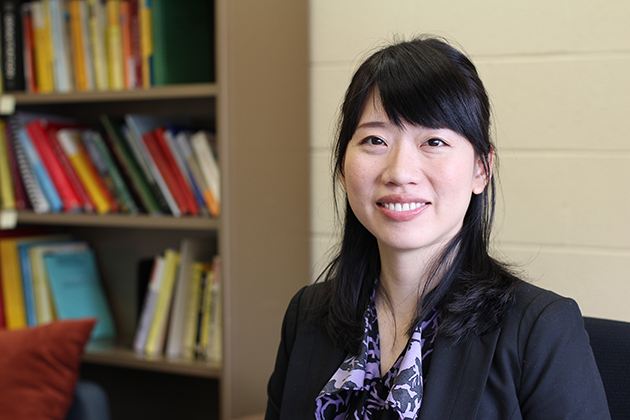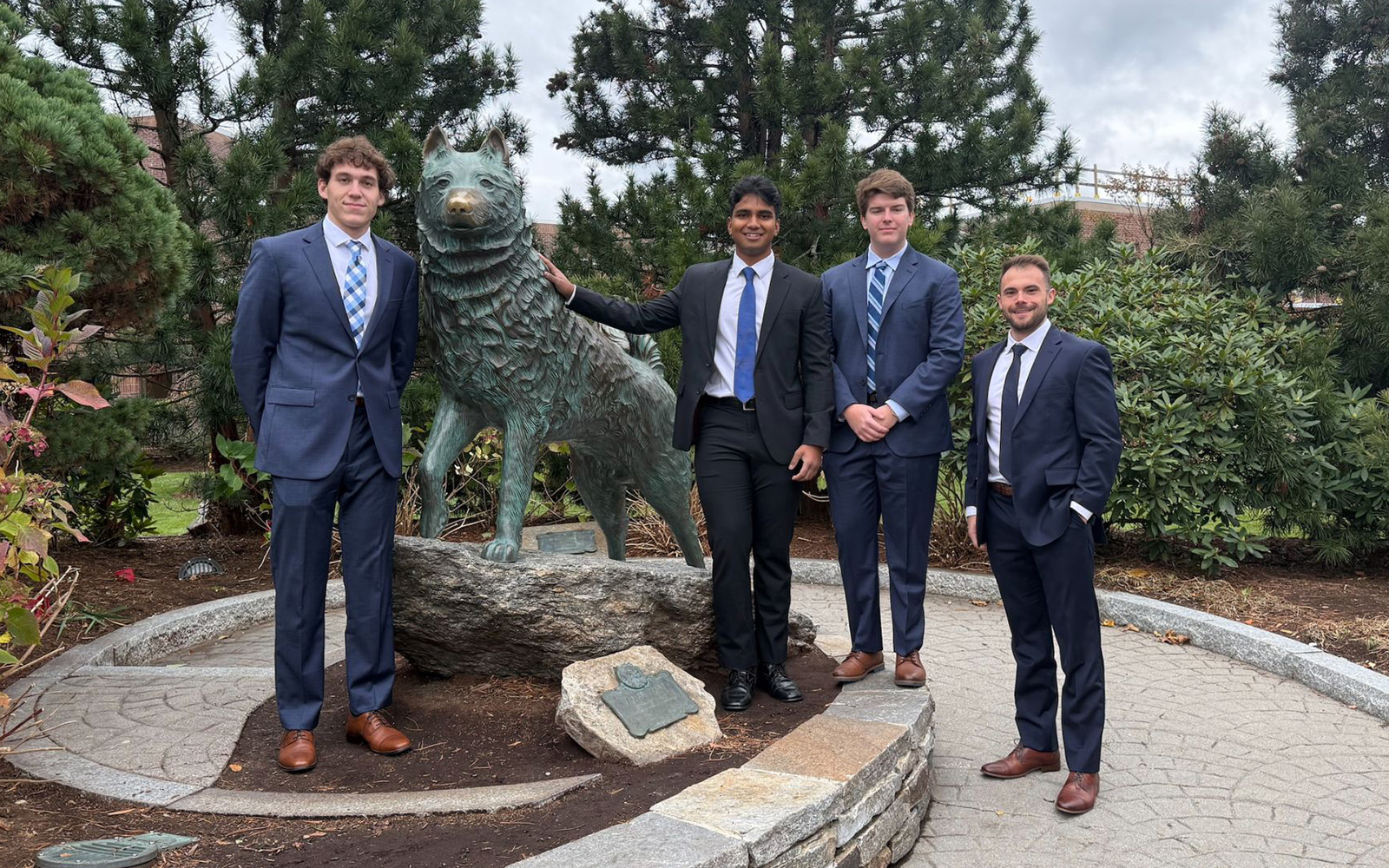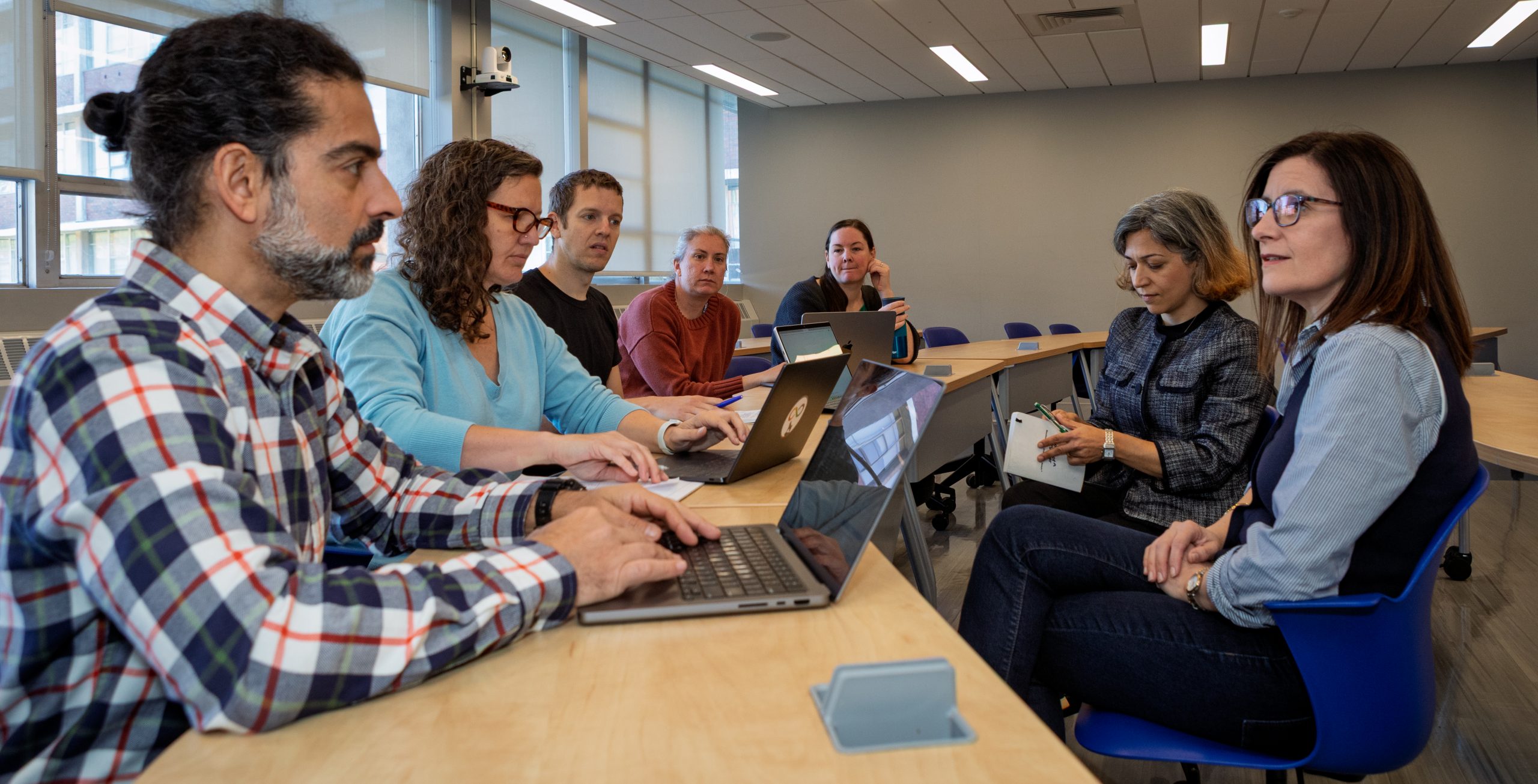
When mathematician Lan-Hsuan Huang blows bubbles with her 3-year-old daughter in the backyard of their home, the toddler gets more than just delight at the shiny floating orbs.
She also gets her first lessons in differential geometry and relativity.
“I ask her: Why are all the bubbles round?” Huang says. “No matter what shape your wand is, like a star or a heart, the bubble will always be spherical. So I ask her why.”
Understanding the shape of soap bubbles is a question that Huang, assistant professor of mathematics, says took mathematicians decades to answer definitively. In fact, the mathematician who solved the soap bubble problem won the first Fields Medal in 1936, an honor known as the Nobel Prize for mathematicians.
A sphere is a very special shape, Huang says, because it has the smallest surface area containing a given volume. And because spheres minimize area, they appear more naturally in the universe.
That’s the basis of Huang’s field of research: geometric analysis, which is at the intersection of what most people think of as geometry and calculus, and employs many principles of physics. Through her theoretical work, Huang draws on Einstein’s theories of gravitation and relativity to understand what shapes are possible in the universe.
“Einstein’s theories create a great challenge for mathematicians,” she says. “We want to know what kind of mathematics can describe the universe, and advance our understanding of the universe by studying those mathematical models.”
Einstein explained in his theory of general relativity that when you combine three-dimensional space with a fourth dimension, time, you create the metric known as spacetime. And when you use spacetime to measure the universe, you find that the universe is not flat, but curved.
That means that any shortest route between two points is, in fact, not a straight line. So what Huang wants to know is: If what we see as a straight line is not the shortest distance between two points, then what is?
“Our universe, in a large scale, is not really flat,” she explains. “So what kinds of corresponding shapes will you have? You want to use the math to find out what geometric shapes are possible, given the curvatures of the universe.”
It’s important to quantify with math the possible shapes in our universe, Huang says. One good reason is to get more accurate calculations of physical properties.
For example, these mathematical models could help physicists predict very large, complicated quantities, like the mass of stars, planets, solar systems, and even galaxies. We know that our Sun is the center of mass for our solar system; these results could also help to study whether – and possibly where – a center of mass exists in other planetary systems of the universe.
Huang’s work also provides rigorous configurations of space with two or more black holes positioned close to one another, which could help researchers understand whether those black holes remain separate and stable over time, or will eventually merge together into a larger black hole.
Huang was recently awarded a five-year, $400,648 CAREER award from the National Science Foundation to answer questions related to spacetime. The grant, titled “Geometric Problems in General Relativity,” will support Huang’s work using Einstein’s relativity equations to predict the curvature of the universe.
Her CAREER award will also help her and her colleagues to expand the program in geometric analysis at UConn. Huang herself admits that geometric analysis is “a technical field, even for mathematicians,” so she will use the grant to establish new training and educational opportunities for students.
Plans are in the works to bring world experts to campus for talks and discussion; to offer a summer workshop for students from universities around the world; and, spinning off of the success of their recent Semester in Differential Geometry, to establish an annual Geometry Day that involves colleagues in other fields like physics and statistics.
So the question of why all bubbles are round isn’t just a difficult one for a three-year old, Huang points out. It’s an important one for mathematics.
And although mathematicians still grapple with these ideas, Huang says that thinking about these questions is not too much to ask a child.
“Of course when I ask her, she doesn’t answer. She just keeps playing,” Huang laughs. “But she remembers, and one day she will understand.”


